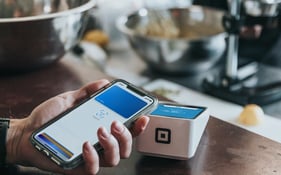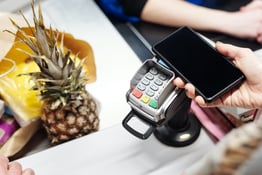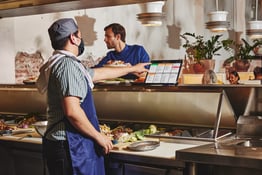Ghost kitchens are essentially restaurants without a storefront or on-site dining options: a kitchen that prepares and distributes food for takeout or delivery. Also known as shared kitchens, cloud kitchens, or virtual restaurants, they exist as a brick-and-mortar location accessible only via online orders, whether through their websites or third-party apps like UberEats, DoorDash, and Grubhub.
What are the benefits of ghost kitchens?
-
Low overhead: When you don’t operate as a full-service restaurant, it significantly cuts down costs including staffing, decor, supplies, and even printed menus. Like food trucks, ghost kitchens may be a way for restaurateurs to try out new concepts with less upfront investment.
-
You can open in a flash: Setting up a ghost kitchen requires renting out a space in an existing, already equipped-space, and setting up your online ordering platform. Much quicker.
-
More revenue streams: A ghost kitchen can be a great second source of income for established restaurants as well. It allows restaurants to open a virtual second location that acts as a delivery-only satellite of their existing location, expanding their delivery radius.
-
Flexibility: Want to add something new to the menu? Or only open for lunch and dinner? Ghost kitchens can adapt on a dime. A single ghost kitchen can cook under several restaurants’ brands, giving owners a tremendous amount of latitude.
Why should you set up a ghost kitchen?
The pandemic brought ghost kitchens into the limelight as dining in, for most of 2020, wasn’t even an option. But ordering food was already on the rise. Something like 60% of Americans order out at least once a week — with the younger Generation Z opting for delivery three times a week. As demand rises for delivery — and labor and real estate prices keep rising — ghost kitchens offer an increasingly attractive business model.
Who sets up ghost kitchens?
-
Smaller brick-and-mortar restaurants: Smaller restaurants often have limited resources, but all you need to launch a ghost kitchen is a functional kitchen. And it doesn’t have to be your own! You can rent out space from another company or restaurant. (Or rent out your kitchen space, if you have a restaurant.)
-
Novice chefs or entrepreneurs: For rookie chefs and/or first-time restaurant owners, ghost kitchens can be a great stepping stone. The upfront costs are low, and using a third-party delivery app makes you instantly visible to a wide market.
-
Food truck owners: A food truck is just a ghost kitchen on wheels, so why not use the ghost kitchen model to keep business revved up? If you have the capacity, deliver out of the truck, as well.
-
Restaurant chains: For restaurants with existing locations, a ghost kitchen can let them expand on their concepts, launch new concepts, or simply deliver over a wider part of town.
-
Large brands or corporations: Truly, any brand or celebrity can leverage an audience into food sales with a ghost kitchen. Several start-up ghost kitchen companies, like Cloud Kitchens and Kitchen United, are buying properties to transform them into ghost kitchen hubs for potential restaurants. Large brands also have the deep pockets to partner with celebrity chefs to make a new restaurant concept pop.
What kinds of business are ghost kitchens good for?
-
Creating a shared commissary space: Depending on the circumstances, several different brands can share either a single space or operate out of a larger shared commissary space run by a single management team. This is instantly plug-and-play if you want to launch a delivery business.
-
Launching virtual “satellite” brands: Many restaurants maintain a delivery-only ghost kitchen a strategic distance away from their brick-and-mortar dining location. Someone ordering on an app will have no idea which of the kitchens is the one cooking their lunch, nor will they care.
-
Renting out restaurant kitchens: Most restaurants aren’t 24-hour operations. So why not let a graveyard shift take over after hours? While the lights in the dining room are off, a ghost kitchen staff can still fill orders from the restaurant.





